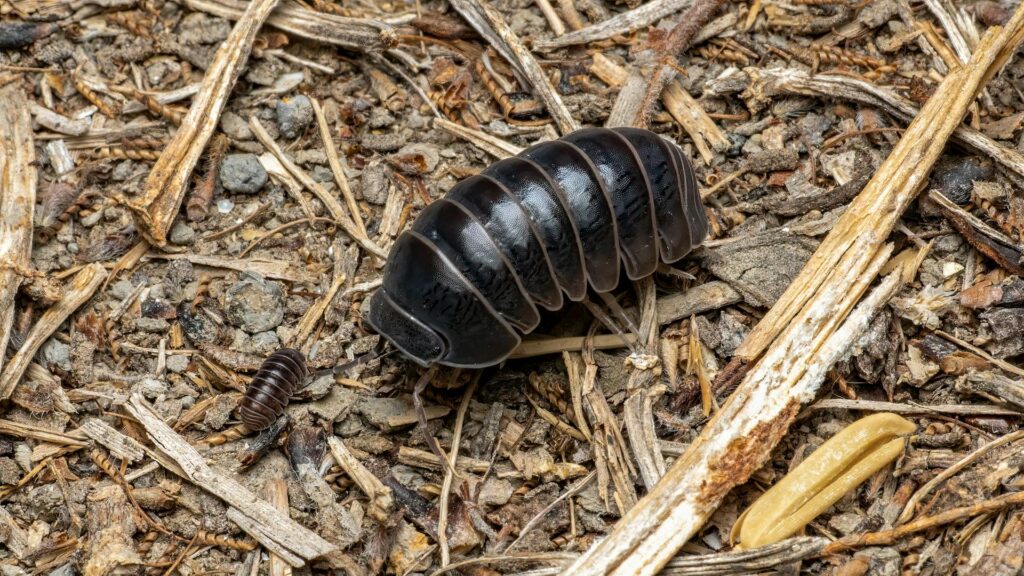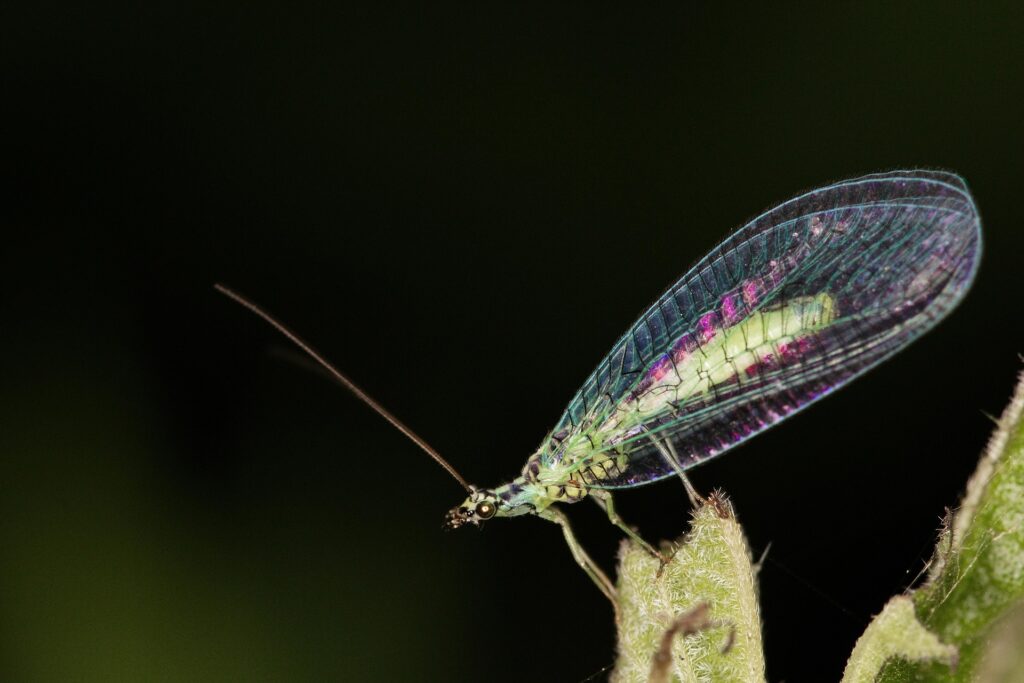Japanese beetles represent one of the most destructive invasive insect pests affecting ornamental plants, gardens, and lawns throughout much of the United States. These voracious feeders can rapidly defoliate hundreds of plant species during their relatively short adult feeding period, while their larvae damage turf grass roots causing extensive lawn deterioration.
Their combined impact on both above-ground plant tissues and below-ground root systems makes Japanese beetles uniquely challenging pests requiring comprehensive management approaches.
What are Japanese beetles?
Japanese beetles (Popillia japonica) are invasive scarab beetles native to Japan that were accidentally introduced to the United States in 1916 through imported nursery stock. These destructive insects have since spread throughout the eastern United States and continue expanding their range westward, establishing populations in areas with suitable climate and host plant availability. Adult beetles measure approximately 1/2 inch in length and are distinctive metallic green and copper-colored insects easily recognized during their summer feeding periods.
Japanese beetles are voracious feeders that consume over 300 different plant species including ornamental plants, fruit trees, vegetables, and agricultural crops. Both adult beetles and their larval stage (white grubs) cause significant damage, with adults skeletonizing leaves by eating tissue between veins while leaving the vein structure intact, and larvae feeding on grass roots causing brown patches in lawns.
These beetles are highly mobile and can fly several miles seeking preferred host plants, often congregating in large numbers on favored species. Their feeding releases volatile compounds that attract additional beetles, creating aggregation behavior where hundreds of beetles may concentrate on single plants or small areas.
Japanese beetles lack natural predators in North America that effectively control their populations, allowing them to reach damaging levels that would be impossible in their native range where natural enemies keep populations in check.
What do Japanese beetles look like?
Japanese beetles have distinctive metallic green heads and thorax (upper body) combined with copper-colored wing covers (elytra) that create their characteristic two-toned appearance. Adult beetles measure approximately 3/8 to 1/2 inch in length with oval, somewhat flattened bodies typical of scarab beetles. Close examination reveals five distinctive white hair tufts on each side of the abdomen and an additional pair at the rear end, creating diagnostic identification features visible when beetles are feeding.
Their bodies have a shiny, metallic appearance that makes them stand out against plant foliage, with the bright green and copper coloration being unmistakable when beetles are present in numbers. Male beetles are slightly smaller than females but share the same coloration patterns and identifying features.
Japanese beetle larvae (white grubs) are C-shaped grubs measuring up to 1 inch when fully grown, with cream-colored bodies, brown heads, and three pairs of legs near the head end. These grubs are distinguished from other white grub species by the V-shaped arrangement of spines on the underside of their last abdominal segment, though this feature requires magnification to observe clearly.
Adults are most visible during their 4-6 week activity period when they emerge en masse and feed voraciously on plant foliage, making them hard to miss during peak infestation periods when dozens or hundreds may cluster on preferred host plants.
Lifecycle of a Japanese beetle
Japanese beetles undergo complete metamorphosis with a one-year lifecycle in most regions, though development can take two years in colder climates. Adult beetles emerge from soil in early to mid-summer and feed for 4-6 weeks before mating and laying eggs. Females burrow into turf grass areas and lay 40-60 eggs individually in soil 2-4 inches deep, preferring moist, well-maintained lawns for egg deposition.
Eggs hatch within 2 weeks, and young larvae begin feeding on grass roots immediately. Grubs pass through three growth stages (instars) as they feed and grow throughout late summer and fall. First and second instar grubs cause minimal damage, but third instar grubs feed voraciously on grass roots during fall before temperatures drop.
As winter approaches, grubs burrow deeper into soil below the frost line (6-8 inches deep) where they remain dormant until spring. When soil temperatures warm in spring, grubs move back toward the surface and resume feeding on grass roots for several weeks before entering the pupal stage in late spring.
Pupation occurs in earthen cells 1-3 inches below the soil surface and lasts 1-2 weeks. Adult beetles emerge from pupae and work their way to the surface, with emergence timing depending on soil temperature and moisture conditions. Peak emergence typically occurs over 2-3 weeks, creating the concentrated feeding periods that cause the most visible plant damage.
Are Japanese beetles dangerous?
Japanese beetles are not dangerous to humans or pets as they don’t bite, sting, or transmit diseases. They’re completely harmless from a health perspective and can be handled without risk of injury, though their spiny legs may feel scratchy when they walk on skin. Their danger lies entirely in the extensive plant and turf damage they cause rather than any direct threats to people or animals.
However, Japanese beetles are extremely dangerous to plants and landscapes, capable of causing devastating damage during their relatively short adult feeding period. Their feeding behavior skeletonizes leaves, creating lace-like appearance that reduces plants’ photosynthetic capacity and can lead to defoliation, weakened plants, and secondary pest problems or diseases attacking stressed vegetation.
The greatest danger involves their invasive nature and lack of effective natural control, allowing populations to reach levels that would be impossible in their native Japan where natural enemies provide regulation. Without comprehensive management, Japanese beetle populations can persist at damaging levels indefinitely once established in areas.
Are Japanese beetles invasive?
Yes, Japanese beetles are highly invasive pests that have spread throughout much of the United States since their accidental introduction over a century ago. They originated in Japan where natural enemies including parasitic wasps and flies keep their populations at low, non-damaging levels. In North America, the absence of these natural enemies allows Japanese beetles to reproduce without effective biological control, enabling population explosions causing severe plant damage.
Japanese beetles meet all criteria defining invasive species: they’re non-native organisms introduced through human activity, they establish self-sustaining populations in new environments, and they cause significant economic and ecological damage in their introduced range. Their invasion continues expanding westward from the initial East Coast establishment, with new populations discovered regularly in previously unaffected states.
Do Japanese beetles kill trees?
Japanese beetles rarely kill healthy, established trees outright, but they can cause significant stress and damage that weakens trees and makes them vulnerable to secondary problems. Repeated severe defoliation over multiple years can eventually kill trees, particularly young, newly planted, or already stressed specimens with limited energy reserves. Single-season defoliation typically doesn’t kill mature trees, though it causes stress, reduces growth, and diminishes aesthetic appearance.
Fruit trees suffer additional damage beyond defoliation as Japanese beetles feed directly on ripening fruits, causing cosmetic damage that makes produce unmarketable and potentially introducing decay organisms through feeding wounds. Young orchard trees experiencing repeated defoliation show reduced growth rates and delayed fruit production affecting long-term productivity.
Certain tree species are particularly vulnerable to Japanese beetle damage including lindens, birches, Japanese maples, flowering crabapples, and purple-leaf plum trees. These highly preferred hosts may require protective measures in areas with established Japanese beetle populations to prevent severe damage requiring years of recovery or ultimately resulting in tree mortality from cumulative stress effects.
What plants attract Japanese beetles?
Japanese beetles feed on over 300 plant species but show strong preferences for certain plants that attract beetles in large numbers:
- Roses: Among the most preferred hosts, with beetles congregating on blooms and leaves causing rapid, severe damage to both flowers and foliage.
- Grape vines: Attract heavy feeding, with beetles consuming both foliage and developing fruit clusters throughout the growing season.
- Linden trees (basswood): Extremely attractive to Japanese beetles and can host hundreds of beetles on single trees during peak activity.
- Birch trees: Particularly river birch and white birch, experience severe defoliation when beetle populations are high in the area.
- Japanese maples and other maple species: Attract significant feeding despite their ornamental value and landscape importance.
- Fruit trees: Including apple, cherry, peach, and plum trees suffer both foliar and fruit damage affecting harvest quality.
- Raspberry and blackberry plants: Attract intense feeding on both leaves and ripening fruit, reducing berry production.
- Flowering crabapples: Highly preferred ornamental trees experiencing severe defoliation annually in beetle-prone areas.
When do Japanese beetles emerge?
Japanese beetle emergence timing varies by geographic location and local weather patterns but generally occurs in early to mid-summer when soil temperatures reach approximately 50°F at a depth of 4 inches. In southern regions, emergence may begin in late May or early June, while northern areas see emergence starting in late June or July. Peak emergence typically occurs over 2-3 weeks, creating concentrated feeding periods causing the most visible plant damage.
Soil temperature and moisture are the primary factors triggering emergence, with beetles requiring adequate soil moisture to successfully work their way from pupal chambers to the surface. Dry soil conditions can delay or reduce emergence success, while heavy rains following dry periods may trigger mass emergences as soil conditions become favorable.
The adult feeding period lasts 4-6 weeks from initial emergence, with individual beetles living 30-45 days. Populations peak in mid-summer when the majority of adults are simultaneously active, typically mid-July in most regions. During this peak period, feeding damage becomes most apparent as hundreds of beetles may congregate on preferred host plants.
How to know if you have a Japanese beetle infestation
Japanese beetle infestations create distinctive damage patterns and visible beetle presence during summer months:
- Skeletonized leaves: You might observe characteristic feeding damage where leaf tissue is consumed between veins, leaving lace-like skeletal appearance on roses, grapes, and other preferred plants.
- Adult beetles visible: It’s common to notice distinctive metallic green and copper-colored beetles clustered on plant foliage during daylight hours in mid-summer.
- Brown lawn patches: You might also discover irregular brown areas in turf grass where grub feeding has killed grass roots, with damaged turf peeling back like carpet.
- Heavy plant defoliation: It is also common to find severe leaf loss on linden, birch, rose, and other preferred host plants during 4-6 week adult activity period.
- Aggregation behavior: You’ll see dozens or hundreds of beetles concentrated on single plants or small landscape areas due to feeding pheromones attracting additional beetles.
How to prevent a Japanese beetle infestation
Japanese beetle prevention requires comprehensive approaches addressing both adult beetles and soil-dwelling larvae:
- Apply preventive grub control: Use preventive insecticide applications to lawns in early summer before eggs hatch, targeting larvae before they cause turf damage.
- Remove adult beetles manually: Hand-pick beetles from plants in early morning when they’re sluggish, dropping them into soapy water for disposal.
- Use protective netting: Cover high-value plants with fine mesh netting during peak beetle activity to physically exclude adults from feeding.
- Avoid trap placement: Don’t use Japanese beetle traps on your property as they attract more beetles than they catch, increasing local feeding damage.
When to call a professional
When dealing with Japanese beetle populations damaging your landscape plants and lawn that are creating extensive property damage concerns, professional pest control services can provide effective beetle management and comprehensive treatment solutions. At Aptive, our pest control experts can assess Japanese beetle activity around your property and develop targeted treatment programs addressing both adult beetles and soil-dwelling grubs, which is crucial for achieving season-long protection of valuable landscape plants and turf areas.
If you’ve noticed Japanese beetle damage on your plants or lawn or have concerns about protecting valuable landscape investments from these destructive invasive pests, don’t wait—contact Aptive today for a free quote. We’ll help you with effective Japanese beetle control while implementing prevention strategies that protect your landscape from both adult beetle feeding damage and grub-related turf destruction throughout the season.
FAQs about Japanese beetles
Here are some frequently-asked questions from homeowners about Japanese beetles and the damage they can cause.
Q: Where do Japanese beetles lay their eggs?
Female Japanese beetles lay their eggs in turf grass areas, preferring moist, well-maintained lawns with short grass for egg deposition. They burrow 2-4 inches deep into soil and lay 40-60 eggs individually throughout the turf during their 4-6 week adult lifespan. Beetles prefer irrigated lawns, golf courses, and other areas with consistent soil moisture that supports egg and larval survival.
They avoid dry, compacted, or heavily shaded soils. This preference for quality turf explains why well-maintained residential lawns often experience the most severe grub damage despite homeowners’ best lawn care efforts.
Q: Are there any plants that repel Japanese beetles?
While no plants completely repel Japanese beetles, certain species are rarely attacked and can be used strategically in landscapes. Geraniums, rue, tansy, and catnip are sometimes cited as repellent plants, though scientific evidence supporting their effectiveness is limited. Garlic and chives planted near susceptible plants may provide minor deterrent effects.
More reliably, planting species Japanese beetles avoid—including boxwood, dogwood, forsythia, holly, magnolia, red maple, and most conifers—reduces landscape damage. Companion planting strategies have limited effectiveness compared to physical barriers, targeted treatments, or simply choosing less-preferred plant species for beetle-prone areas.
Q: Can Japanese beetles swim?
Japanese beetles cannot swim and will drown if they fall into water and cannot escape quickly. This vulnerability is exploited in hand-removal methods where beetles are knocked into buckets of soapy water, which breaks water surface tension and prevents escape. The soap ensures beetles sink and drown rather than floating on the water surface.
Q: Why shouldn’t you squish Japanese beetles?
Squishing Japanese beetles on plants releases aggregation pheromones and plant volatiles that attract more beetles to the area, potentially worsening infestations rather than reducing them. The scent signals from crushed beetles tell other beetles that preferred host plants are present, drawing additional feeding adults. Additionally, squished beetles leave messy residue on plants and hands.
Q: What month do Japanese beetles go away?
Japanese beetles typically disappear in late July through August depending on geographic location and local emergence timing. In southern regions, they may be gone by early August, while northern areas see beetles persisting into late August or early September. Individual adults live 30-45 days, so populations decline as beetles complete their lifecycles without new emergence. By September, virtually all adults have died after mating and egg-laying.









